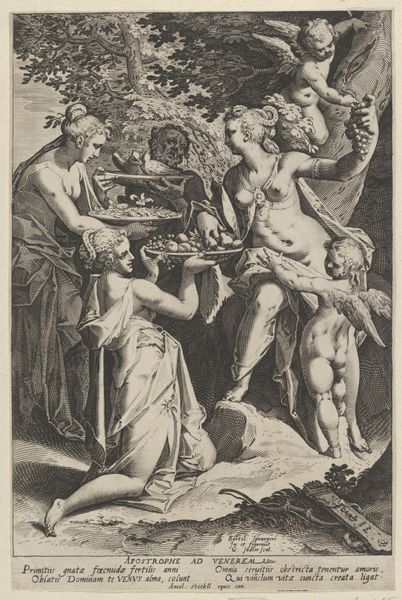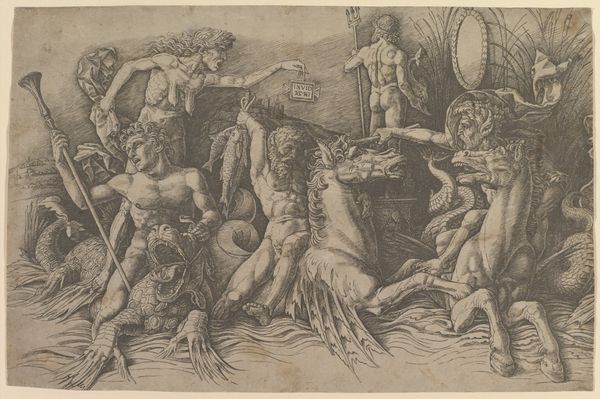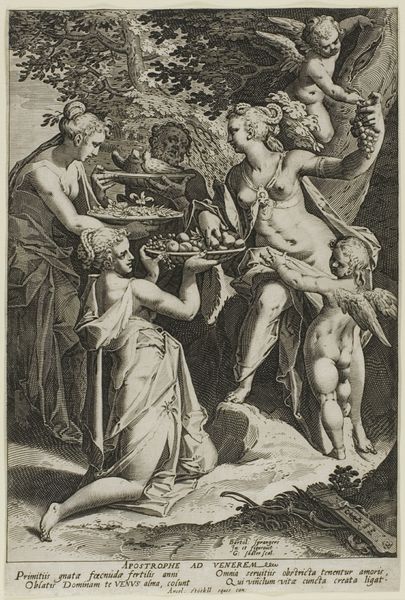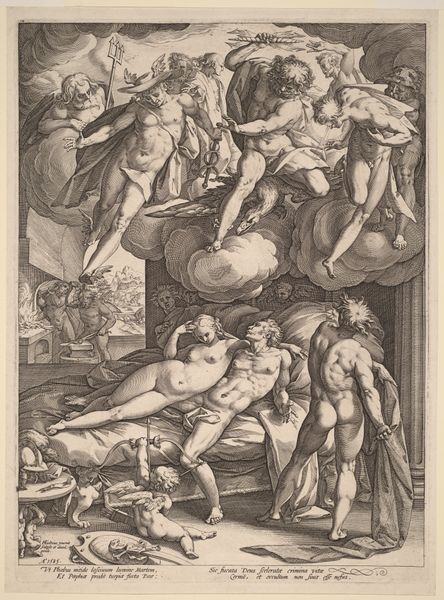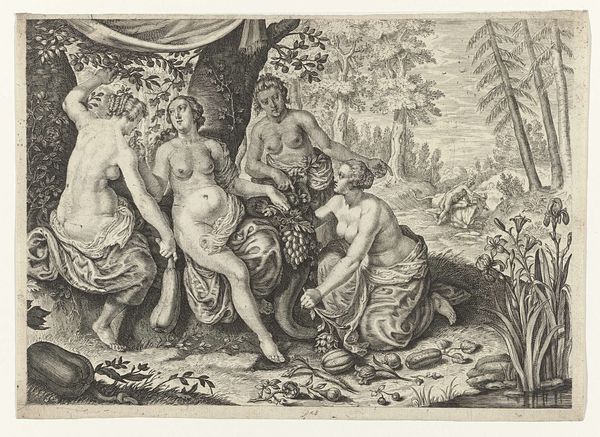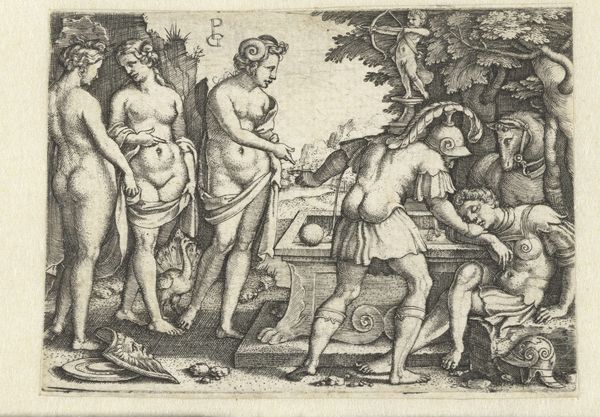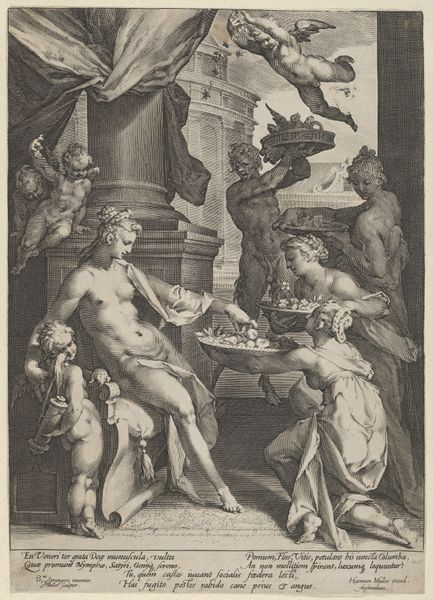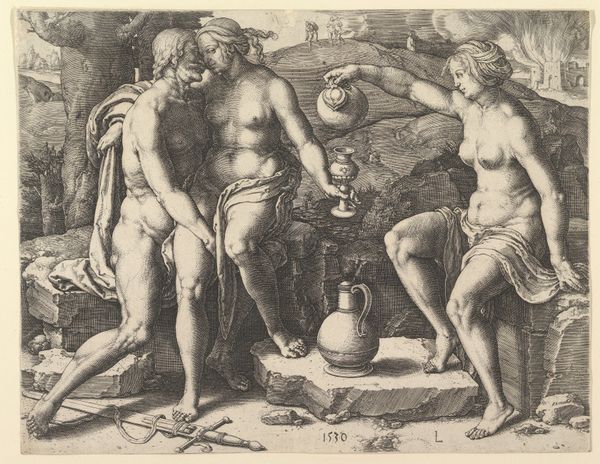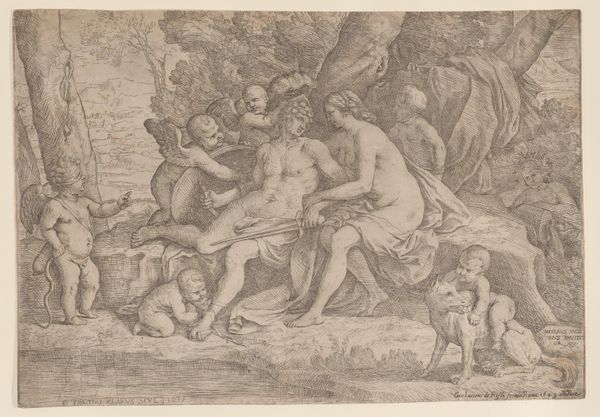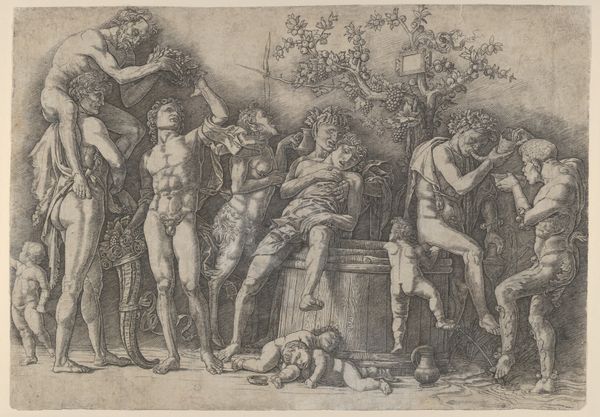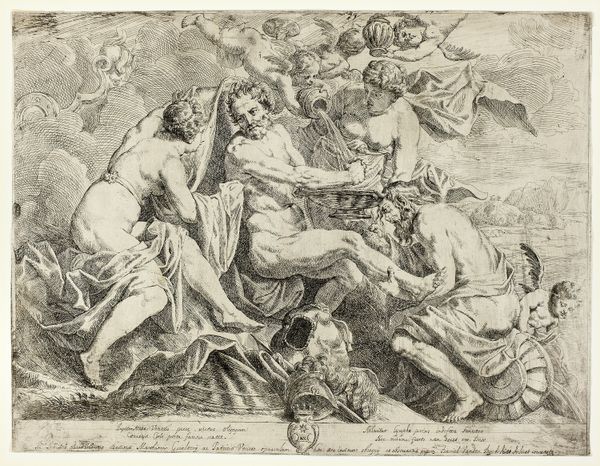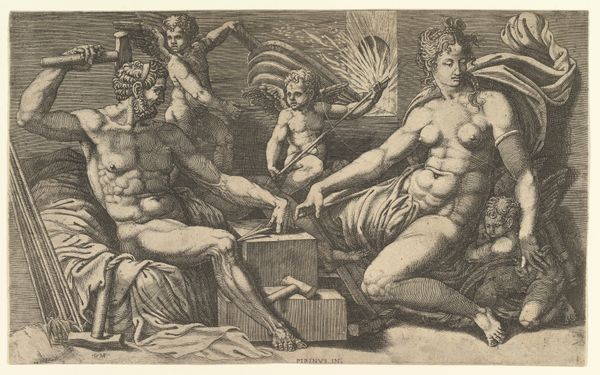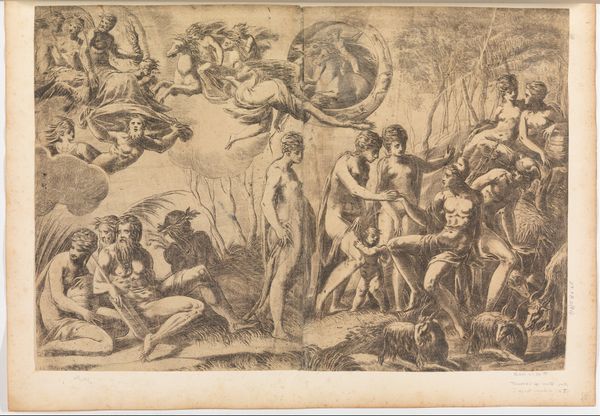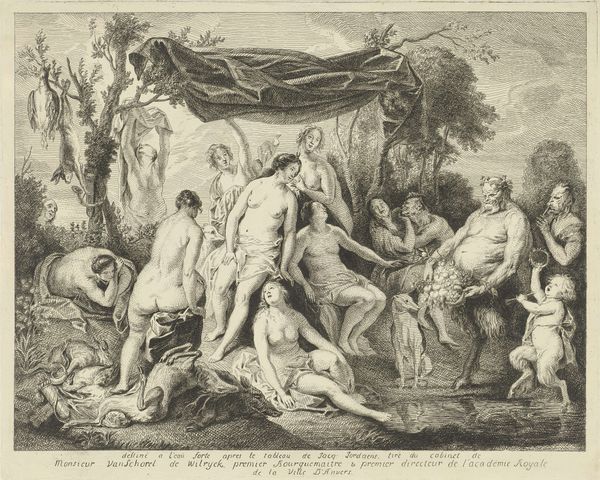
Dimensions: 173 mm (height) x 245 mm (width) (bladmål)
Curator: Immediately, this image feels intensely busy, wouldn’t you agree? A crowded table, lots of bodies...it has a rather chaotic feel, despite its classical subject. Editor: Yes, a flurry of activity indeed. What we are looking at is Nicolaes Jansz. Clock’s “Peleus og Thetis' bryllup”, or “The Wedding of Peleus and Thetis.” It was created between 1587 and 1591, and it’s an engraving, so ink on paper. Curator: An engraving, right. Seeing the clear lines, the layering and density, immediately directs me towards considerations of the process itself. The level of craftsmanship involved in achieving this density through engraving is striking. The stark contrasts create an almost tactile experience. Editor: And alluding to a moment brimming with social significance. Peleus, a mortal king, and Thetis, a sea nymph. Their union was celebrated as a momentous occasion in Greek mythology. You can really feel the celebratory air; however, from a historical standpoint, such imagery would have been accessible to a limited audience at the time, viewed perhaps in private collections. Its function then becomes tied to the social standing of the patrons of art. Curator: Certainly. And let’s consider the paper itself – the raw material, its cost, availability. These aspects would dictate the size and potentially the number of impressions that could be made, which ultimately dictates accessibility. Moreover, consider the labor involved. Was Clock working alone, or did he have assistants? The division of labor impacts the perception of the artwork itself. Editor: All crucial considerations when analyzing a piece within its socio-historical frame. Take into account too that the mythology would have served a didactic role, transmitting values and beliefs to the privileged viewers who possessed the wealth and education to interpret such complex allegories. Curator: Precisely, making it a luxury good imbued with cultural capital, further solidifying social hierarchies. A marriage of art, commerce, and ideology. Editor: I’d argue, then, it offers insights into the Renaissance obsession with classical learning, but also its place in contemporary politics, a symbolic tapestry reflecting the values of its era. It serves as a window into a world of powerful individuals, the intricacies of their network. Curator: Agreed. I think what strikes me is just how layered this relatively small print is. Layers of ink, layers of meaning, layers of socioeconomic context… Editor: Yes, an intimate portrayal of a monumental story designed to be seen only by an elite few; something to always keep in mind.
Comments
No comments
Be the first to comment and join the conversation on the ultimate creative platform.
